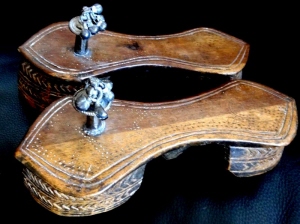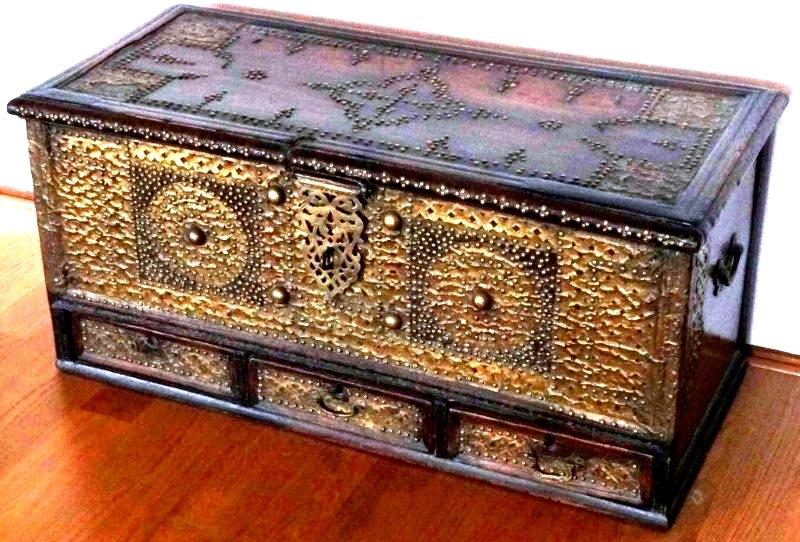 |
|
Omani antique wooden sandals with silver toe-pins
|
The most impressive items made of wood by the Omani are of course the different types of Arab ships including the Baghlah, Ghanjah, Boom, Battil, Sanbuq, Jalbut, Baqqarah etc. The large pre-20th century wooden ships also had beautiful carvings like we still find on Omani doors in Zanzibar and Oman and also on the "Malabar" chest. The Slavery section has an antique photo of an Omani ship. A famous place for building ships is the town of Sur.
Our collection contains understandably only smaller examples of woodwork including Omani chests (Mandoos Mandus), writing boxes, jar, camel saddle, wooden shoes, measurement jar etc. The oldest (very large) chests found in Oman are of Portuguese origin and are made of extremely hard teak-wood that possibly originates from South America. These chests have no decoration and the hinges are made of metal wire. These are extremely rare.The next oldest category are the Shiraz chests. These are also large (have not seen any smaller ones) with thick brass decoration pieces. The design of these has clearly been derived from Dutch VOC chests that were probably made in Choromandel (Sounthern India) or Ceylon (Sri Lankha) and Batavia Dutch colonies in the 17th and 18th centuries. No examples added as they were too big to fit in my home. The next category are the Surat and Bombay chests typically made of "regional" teak, rosewood or East African bread tree wood. A useful source but with many questions remaining is the book by Sheila Unwin. I have added again from the swords and shields section a "Baluchi shield" from Oman with brass decoration as it has similarities with the Shiraz chests and the brass decorations just inside the steel band are almost identical to the top of an Saidi Khanjar! An early description of Omani (Zanzibari) doors can be found in J.J. Adie A Guide to Zanzibar 1949 page 101-103 (reproduced form an article in the East African Standard in 1946.

Omani antique Mandus (wedding-chest)
Emily Ruete in her memoirs of an Arabian Princess 1886, when discussing the furniture in the palace she grew up says: " we had a sort of chest or trunk with usually two or three drawers, and inside a secret hiding place for money and jewellery. These trunks , of which there usually were several in each room, were very large, made of rosewood and beautifully adorned with thousands of small , yellow studs with brass heads" Princess Emily left Zanzibar in 1867, so by then chests with many brass nails were used in the Omani palaces and houses in Zanzibar.
